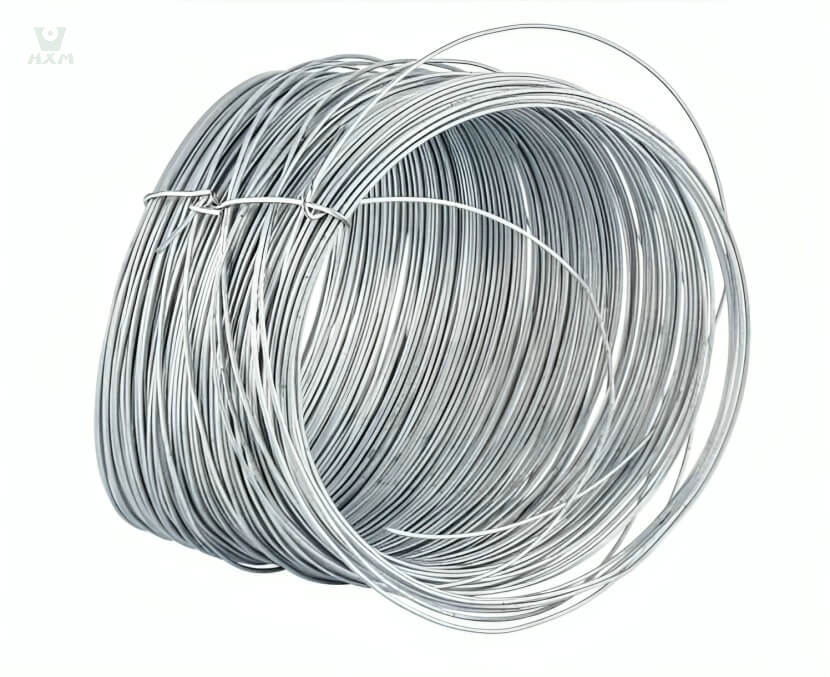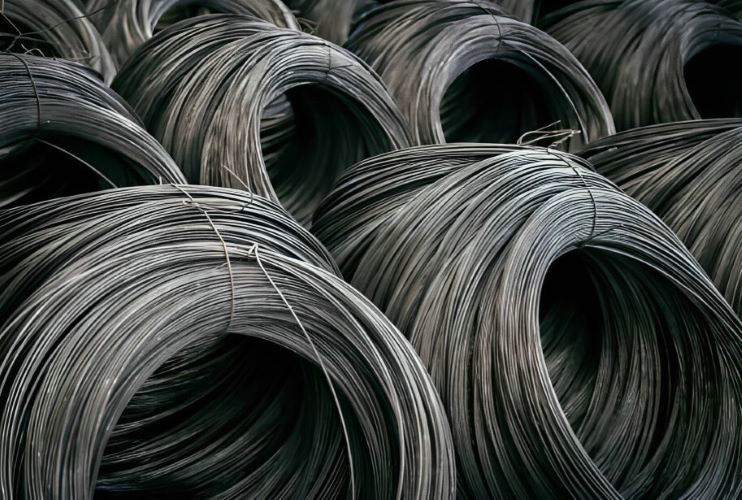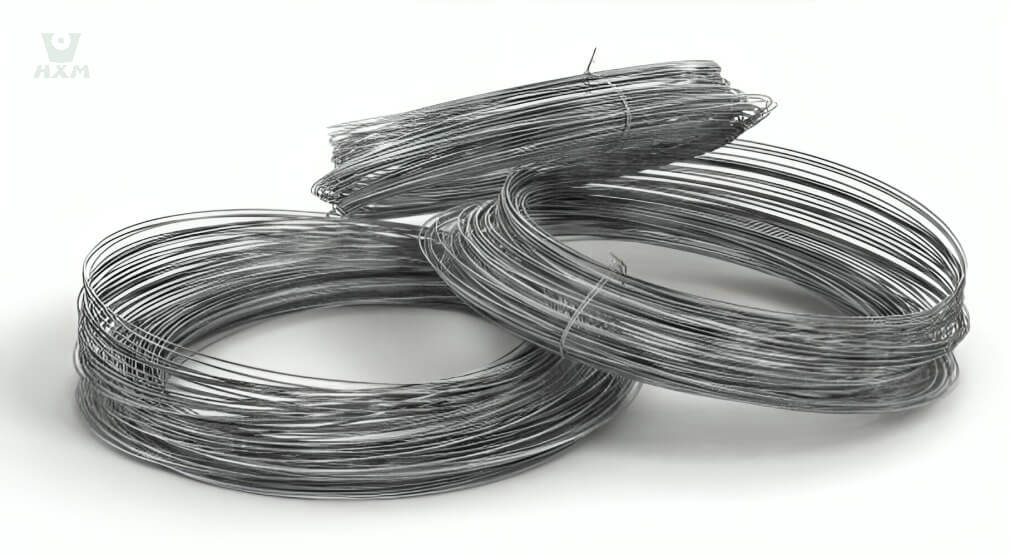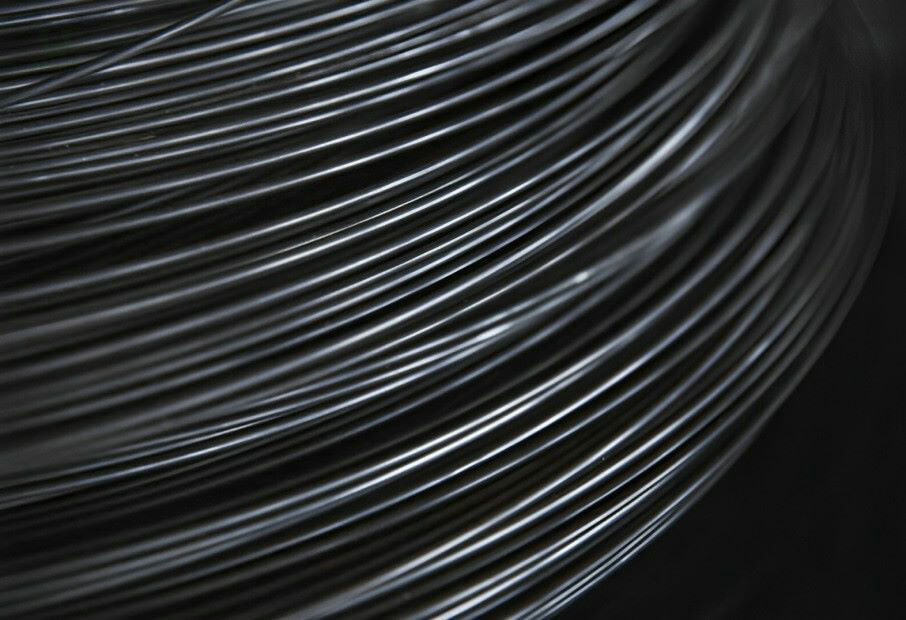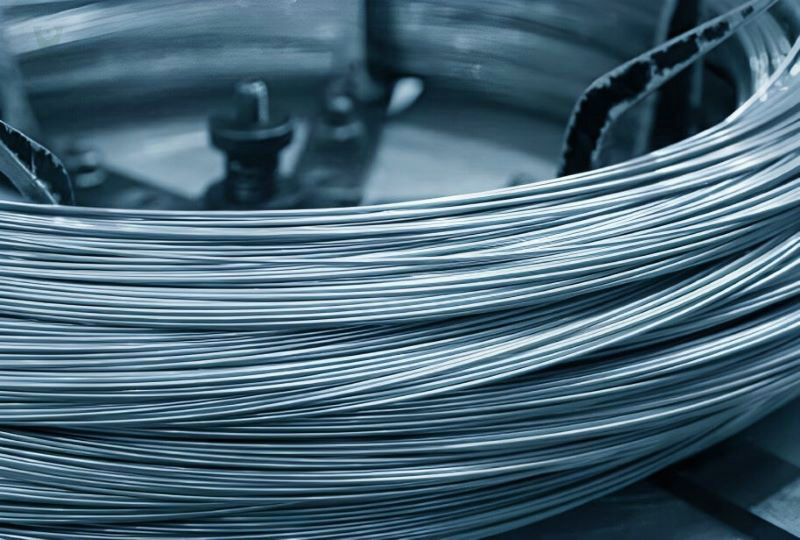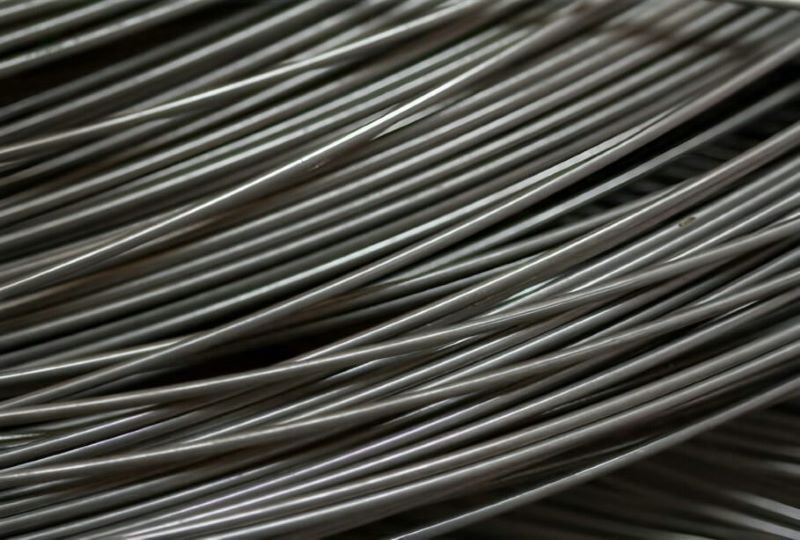Stainless Steel Wire For Welding Supplier
Size: Diameter 0.2mm-5.5mm, 5.5mm-12mm
Standard: GB1220, ASTM A484/484M, EN 10060/ DIN 1013 ASTM A276, EN 10278, DIN 671
Main Grade: 201, 304, 316, 316L, 310s, 430
Finish: Black, NO.1, mill finish, cold draw
product description of Stainless Steel Wire For Welding
Stainless Steel Wire For Welding is an essential metallic material widely employed in various welding projects. This type of stainless steel wire exhibits excellent corrosion resistance and a visually appealing surface, making it adaptable to diverse and challenging environmental conditions.
Stainless Steel Wire For Welding typically incorporates high-carbon, high-chromium, and high-nickel alloy elements to enhance its hardness and corrosion resistance. Common grades for welding stainless steel wire include 304, 316, 317, among others. These grades are prevalent in the market and boast good welding performance and corrosion resistance.
The specifications and models of Stainless Steel Wire For Welding are diverse, allowing for the selection of suitable options based on different application scenarios. When choosing this type of stainless steel wire, considerations should be given to chemical composition, mechanical properties, corrosion resistance, and other indicators to ensure it meets the required standards.
Additionally, to achieve optimal welding results, proper pre-treatment and control of welding processes are necessary for Stainless Steel Wire For Welding. Pre-treatment involves procedures such as cleaning, rust removal, and degreasing to eliminate surface impurities and gases, thereby enhancing welding quality. Welding process control includes selecting appropriate welding methods, parameters, and materials to ensure excellent weld joint and weld seam quality.
specification of Stainless Steel Wire For Welding
Production Range of stainless steel wire for welding
Size: Diameter 0.2mm-5.5mm, 5.5mm-12mm
Standard: GB1220, ASTM A484/484M, EN 10060/ DIN 1013 ASTM A276, EN 10278, DIN 671
Main Grade: 201, 304, 316, 316L, 310s, 430
Finish: Black, NO.1, mill finish, cold draw
Main grade description in different standard
Species | Brand | Species | Brand |
Austenite type | HlCrl9Ni9 H0Crl9Ni12Mo2 H00Crl9Nil2M02 HOOCr19Ni12Mo2Cu2 HOCrl9Nil4M03 H0Cr21Ni10 H00Cr2lNil0 HOCr20NiloTi HOCr20Nil0Nb H00Cr20Ni25Mo4Cu HlCr21Ni10Mn6 | Austenite type | H1Cr24Nil3 H1Cr24Ni13Mo2 H00Cr25Ni22Mn4M02N H1Cr26Ni21 HOCr26Ni21 |
Ferrite type | HOCrl4 HlCrl7 | ||
Martensitic | HlCrl3 H2Crl3 HOCrl7Ni4Cu4Nb |
features of stainless steel wire for welding
- Stable Chemical Composition: The chemical composition of Stainless Steel Wire for Welding is precisely controlled to ensure its stable performance over extended periods of use. This characteristic enables it to deliver reliable performance in various environmental conditions, minimizing quality issues arising from fluctuations in chemical composition.
- Outstanding Welding Performance: Due to its unique alloy composition, Stainless Steel Wire for Welding exhibits excellent welding capabilities. It is easy to weld, producing high-quality weld seams and reducing issues such as cracks and porosity during the welding process.
- Exceptional Linearity: Stainless Steel Wire for Welding possesses a high degree of linearity, meaning it has high dimensional accuracy along its length direction and is less prone to bending or twisting. This feature provides convenience in the manufacturing process and ensures the precision and reliability of the final product.
application of stainless steel wire for welding
Mechanical Manufacturing: In the field of mechanical manufacturing, stainless steel materials find extensive use in the fabrication of various equipment and components. MIG/TIG/SAW welding technologies can be employed for connecting stainless steel sheets, pipes, and rods, enhancing the stability and reliability of equipment.
Chemical Equipment: In the chemical industry, stainless steel is widely utilized in the manufacturing of various equipment and pipelines due to its corrosion resistance. MIG/TIG/SAW welding technologies can be applied to connect stainless steel materials in chemical equipment, ensuring the integrity and corrosion resistance of the equipment.
Pressure Vessels: In the realm of pressure vessels, stainless steel is widely employed for manufacturing various pressure vessels owing to its high strength and corrosion resistance. MIG/TIG/SAW welding technologies can be utilized in the fabrication of stainless steel pressure vessels, improving the safety and reliability of the containers.
MIG/TIG/SAW Welding Technologies
MIG (Metal Inert Gas) welding is a commonly used welding method that utilizes inert gas as a shielding gas. It achieves welding by melting the filler metal wire with the base material. MIG welding is characterized by a high deposition rate and fast welding speed, making it suitable for welding various materials, including stainless steel.
TIG (Tungsten Inert Gas) welding is a welding method based on tungsten electrode inert gas shielded welding. It uses inert gas to protect the welding area from air intrusion while employing a tungsten electrode as the carrier of the arc to melt the filler metal and base material together. TIG welding is characterized by low heat input, high penetration depth, and high welding quality, making it suitable for welding thin plates and complex structures.
SAW (Submerged Arc Welding) is an efficient welding method that uses filler wire and welding current to generate an arc beneath a molten pool, melting the filler metal and base material together. SAW welding is characterized by a high deposition rate and low cost, making it suitable for large-scale production and welding thick plates.
Solid wire
Solid wire and flux-cored wire are two types of stainless steel welding wires used for welding applications. Stainless steel flux-cored wire is capable of welding various stainless steels, as well as carbon steel and low-alloy steel. It is primarily used in MAG welding processes, offering advantages such as minimal spatter, exceptional arc stability, and qualification for X-ray inspections.
As widely recognized, stainless steel welding wire is categorized based on its use and form. This categorization further divides the wire into various versions, which can then be more specifically classified. In the subsequent discussion, we will provide an overview of different types of stainless steel welding wires.
1. Stainless steel solid wire version:
HLT-307Si
ER 308L
Used to link ultra-low carbon 00Cr19Ni10 stainless steel structural components
ER 309Si
Because of the inclusion of Mo, it’s better durability, crack resistance, and corrosion resistance compared to HLT-309/309L at high temperatures
ER 310
ER 312
It’s acceptable for the connection of dissimilar steels, along with the chance of cracks is quite low, so it’s extremely acceptable for stainless steel cladding, dissimilar base materials, hardened alloy steel, and places where the connection is hard or pores are prone to appear.
ER 317
ER 430
Suitable for linking 17Cr stainless steel
ER 630
ER 2209
2.E308T1-1
E309LT1-1
E316LT1-1
E410NiMo
For T1-113Cr-NiMo steel, the strength and hardness are greater than 410, which may be utilized in applications requiring greater wear resistance and corrosion resistance.
3.ER308
ER308L
ER316
18Cr-12Ni-2.5Mo steel, suitable for petrochemical manufacturing and storage gear, etc..
ER316L
ER309
ER309L
ER321
For 18Cr-8Ni-Ti steel, it’s good corrosion resistance because of the inclusion of Ti
ER347
1. The way to store welding cable?
1. The warehouse where welding cable is saved should have ventilated and dry surroundings to avoid moisture; liquids that are simple to influence, such as water, acid, and alkali, are rejected.
There are corrosive substances, and it’s even more inappropriate to store welding cable with these substances in exactly the exact same warehouse.
2. The welding cable should be set on a wooden plank, not directly on the ground or close to the wall.
3. When touching and managing the welding cable, particularly the”heat shrinkable film” of the interior packaging, please be careful to not damage the packaging.
4. Open the welding cable package and use it up whenever possible (needed within a week).
5. Please store in line with the type and specification of the welding cable to avoid misuse.
When choosing stainless steel link, what sort of connection material ought to be chosen, such as 304 connections, utilize a 304 welding rod.
But in nbt47015, there’s absolutely not any connection between both of these types of materials.
According to electricity industry standards, enicrfe-3 is suggested for connection.
data sheet of stainless steel wire for welding
Martensitic
Category | Brand | Chemical composition (mass fraction) (%) | ||||||||
C | Si | Mn | P | S | Cr | Ni | M0 | Cu | other | |
Austenite type | H1Crl9Ni9 | ≤0.14 | ≤0.60 | 1.00~2.00 | ≤0.030 | ≤0.030 | 18.00~20.00 | 8.00~10.00 | ||
HOCr19Ni12Mo2 | ≤0.08 | ≤0.60 | 1.00~2.50 | ≤O.030 | ≤O.030 | 18.00~20.00 | 11.00~14.00 | 2.00~3.00 | ||
H00Cr19Ni- 12Mo2 | ≤O.03 | ≤0.60 | 1.00~2.50 | ≤0.030 | ≤0.020 | 18.00~20.00 | 11.00~14.00 | 2.00~3.00 | ||
H00Crl9Nil2- Mo2Cu2 | ≤O.03 | ≤O.60 | 1.00~2.50 | ≤0.030 | ≤0.020 | 18.00~20.00 | 11.00~14.00 | 2.00~3.00 | 1.00~2.50 | |
HOCrl9Nil4M03 | ≤O.08 | ≤O.60 | 1.00~2.50 | ≤O.030 | ≤0.030 | 18.50~20.50 | 13.00~15.00 | 3.00~4.00 | ||
HOCr2lNilO | ≤O.08 | ≤O.60 | 1.00~2.50 | ≤O.030 | ≤O.030 | 19.50~22.00 | 9.00~11.00 | |||
H00CrNi10 | ≤O.03 | ≤0.60 | 1.00~2.50 | ≤0.030 | ≤O.020 | 19.50~22.00 | 9.00~11.00 | |||
HOCr20NilOTi | ≤0.08 | ≤0.60 | 1.00~2.50 | ≤0.030 | ≤O.030 | 18.50~20.50 | 9.00~lO.50 | Ti9×wc ~1.00 | ||
HOCr20NilONb | ≤O.08 | ≤O.60 | 1.00~2.50 | ≤O.030 | ≤0.030 | 19.00~21.50 | 9.00~11.00 | NblO×wc ~1.00 | ||
H00Cr20Ni25- M04Cu | ≤O.03 | ≤O.60 | 1.00~2.50 | ≤0.030 | ≤0.020 | 19.00~21.00 | 24.00~26.00 | 4.00~5.00 | 1.00~2.00 |
Category | Brand | Chemical composition (mass fraction) (%) | ||||||||
C | Si | Mn | P | S | Cr | Ni | M0 | Cu | other | |
Austenitic type | H1Cr21NilOMn6 | ≤0.10 | ≤0.60 | 5.00~7.00 | ≤0.030 | ≤0.020 | 20.00~22.00 | 9.00~11.00 | ||
H1Cr24Nil3 | ≤O.12 | ≤O.60 | 1.00~2.50 | ≤0.030 | ≤0.030 | 23.00~25.00 | 12.oo~14.00 | |||
HlCr24Nil3M02 | ≤0.12 | ≤0.60 | 1.00~2.50 | ≤0.030 | ≤0.030 | 23.00~25.00 | 12.00~14.00 | 2.00~3.00 | ||
H00Cr25Ni22- Mn4M02N | ≤0.03 | ≤O.50 | 3.50~5.50 | ≤0.030 | ≤0.020 | 24.00~26.00 | 21.50~23.00 | 2.00~2.80 | N0.10~ O.15 | |
HlCr26Ni21 | ≤O.15 | ≤O.60 | 1.00~2.50 | ≤0.030 | ≤0.030 | 25.00~28.00 | 20.00~22.oo | |||
H0Cr26Ni21 | ≤0.08 | ≤O.60 | 1.oo~2.50 | ≤O.030 | ≤0.030 | 25.00~28.00 | 20.00~22.00 | |||
Ferritic type | H0Cr14 | ≤0.06 | ≤O.70 | ≤O.60 | ≤O.030 | ≤0.030 | 13.00~15.00 | ≤0.60 | ||
H1Crl7 | ≤0.10 | ≤0.50 | ≤O.60 | ≤0.030 | ≤O.030 | 15.50~17.00 | ≤O.60 | |||
Martensitic type | H1Crl3 | ≤0.12 | ≤O.50 | ≤O.60 | ≤O.030 | ≤O.030 | 11.50~13.50 | ≤0.60 | ||
H2Cr13 | 0.13~O.21 | ≤O.60 | ≤0.60 | ≤O.030 | ≤0.030 | 12.00~14.00 | ≤O.60 | |||
H0Crl7Ni- 4Cu4Nb | ≤O.05 | ≤O.75 | 0.25~0.75 | ≤0.030 | ≤0.030 | 15.50~17.50 | 4.00~5.00 | ≤0.75 | 3.00~4.00 | nbo.15~ O.45 |
nbo.15 ~ Pickling after bright heat treatment.
ASTM | DIN / EN | JIS | GB | ISO Name | Other |
S20100 201 | 1.4372 | SUS201 | S35350 | X12CrMnNiN17–7-5 | J1 L1 LH 201J1 |
S20200 202 | 1.4373 | SUS202 | S35450 | X12CrMnNiN18–9-5 | 202 L4, 202 J4, 202 J3 |
S30400 304 | 1.4301 | SUS304 | S30408 | X5CrNi18-10 | 06Cr19Ni10 0Cr18Ni9 |
S31603 316L | 1.4404 | SUS316L | S31603 | X2CrNiMo17-12-2 | 022Cr17Ni12Mo2 00Cr17Ni14Mo2 |
S40900 409 | – | SUH409 | S11168 | X5CrTi12 | 0Cr11Ti |
S31008 310S | 1.4951 | SUS310S | S31008 | X12CrNi23-12 | 06Cr25Ni20 0Cr25Ni20 |
S41008 410S | 1.4000 | SUS410S | S11306 | X6Cr13 | – |
S43000 430 | 1.4016 | SUS430 | 10Cr17 | X6Cr17 | 1Cr17 |
Main grade chemical components in different standard
201 | C % | Si% | Mn % | P % | S % | Ni % | Cr % | N % | Mo % |
ASTM | 0.15 | 1.00 | 5.5-7.5 | 0.050 | 0.030 | 3.5-5.5 | 16.0-18.0 | 0.25 | – |
DIN/EN | 0,15 | 1,00 | 5,5-7,5 | 0,045 | 0,015 | 3,5-5,5 | 16,0-18,0 | 0,05-0,25 | – |
JIS | 0.15 | 1.00 | 5.5-7.5 | 0.060 | 0.030 | 3.5-5.5 | 16.0-18.0 | 0.25 | – |
GB | 0.15 | 1.00 | 5.5-7.5 | 0.050 | 0.030 | 3.5-5.5 | 16.0-18.0 | 0.05-0.25 | – |
202 | C % | Si% | Mn % | P % | S % | Ni % | Cr % | N % | Mo % |
ASTM | 0.15 | 1.00 | 7.5-10.0 | 0.060 | 0.030 | 4.0-6.0 | 17.0-19.0 | 0.25 | – |
DIN/EN | 0,15 | 1,00 | 7,5-10,5 | 0,045 | 0,015 | 4,0-6,0 | 17,0-19,0 | 0,05-0,25 | – |
JIS | 0.15 | 1.00 | 7.5-10.0 | 0.060 | 0.030 | 4.0-6.0 | 17.0-19.0 | 0.25 | – |
GB | 0.15 | 1.00 | 7.5-10.0 | 0.050 | 0.030 | 4.0-6.0 | 17.0-19.0 | 0.05-0.25 | – |
304 | C % | Si% | Mn % | P % | S % | Ni % | Cr % | N % | Mo % |
ASTM | 0.08 | 0.75 | 2.00 | 0.045 | 0.030 | 8.0 – 10.5 | 18.0-20.0 | 0.10 | – |
DIN/EN | 0,07 | 1,00 | 2,00 | 0,045 | 0,015 | 8,0 – 10,5 | 17,5-19,5 | 0,10 | – |
JIS | 0.08 | 1.00 | 2.00 | 0.045 | 0.030 | 8.0 – 10.5 | 18.0-20.0 | – | – |
GB | 0.08 | 1.00 | 2.00 | 0.045 | 0.030 | 8.0 – 10.0 | 18.0-20. 0 | – | – |
316L | C % | Si% | Mn % | P % | S % | Ni % | Cr % | N % | Mo % |
ASTM | 0.030 | 0.75 | 2.00 | 0.045 | 0.030 | 10.0-14.0 | 16.0-18.0 | 0.10 | 2.00-3.00 |
DIN/EN | 0,030 | 1,00 | 2,00 | 0,045 | 0,015 | 10,0-13,0 | 16,5-18,5 | 0,10 | 2,00-2,50 |
JIS | 0.030 | 1.00 | 2.00 | 0.045 | 0.030 | 12.0-15.0 | 16.0-18.0 | – | 2.00-3.00 |
GB | 0.030 | 0.75 | 2.00 | 0.045 | 0.030 | 10.0-14.0 | 16.0-18.0 | 0.10 | 2.00-3.00 |
409 | C % | Si% | Mn % | P % | S % | Ni % | Cr % | N % | Ti % |
ASTM | 0.08 | 1.00 | 1.00 | 0.045 | 0.03 | 0.50 | 10.5-11.7 | – | 6*C% – 0.75 |
DIN/EN | – | – | – | – | – | – | – | – | – |
JIS | 0.08 | 1.00 | 1.00 | 0.040 | 0.030 | – | 10.5-11.7 | – | 6*C% – 0.75 |
GB | 0.08 | 1.00 | 1.00 | 0.045 | 0.030 | 0.60 | 10.5-11.7 | – | 6*C% – 0.75 |
310s | C % | Si% | Mn % | P % | S % | Ni % | Cr % | N % | Mo % |
ASTM | 0.08 | 1.50 | 2.00 | 0.045 | 0.030 | 19.0-22.0 | 24.0-26.0 | – | – |
DIN/EN | 0,10 | 1,50 | 2,00 | 0,045 | 0,015 | 19,0-22,0 | 24,0-26,0 | 0,10 | – |
JIS | 0.08 | 1.50 | 2.00 | 0.045 | 0.030 | 19.0-22.0 | 24.0-26.0 | – | – |
GB | 0.08 | 1.50 | 2.00 | 0.045 | 0.030 | 19.0-22.0 | 24.0-26.0 | – | – |
410S | C % | Si% | Mn % | P % | S % | Ni % | Cr % | N % | Mo % |
ASTM | 0.08 | 1.00 | 1.00 | 0.040 | 0.030 | 0.60 | 11.5-13.5 | – | – |
DIN/EN | 0,08 | 1,00 | 1,00 | 0,040 | 0,015 | – | 12,0-14,0 | – | – |
JIS | 0.08 | 1.00 | 1.00 | 0.040 | 0.030 | – | 11.5-13.5 | – | – |
GB | 0.08 | 1.00 | 1.00 | 0.040 | 0.030 | 0.60 | 11.5-13.5 | – | – |
Main grade mechanical property in different standard
201 | Y.S./Mpa ≥ | T.S./Mpa ≥ | E.L./% ≥ | HB ≤ | HRB ≤ | HBW ≤ | HV ≤ |
ASTM | 260 | 515 | 40 | – | 95 | 217 | – |
JIS | 275 | 520 | 40 | 241 | 100 | – | 253 |
GB | 205 | 515 | 30 | - | 99 | – | - |
202 | Y.S./Mpa ≥ | T.S./Mpa ≥ | E.L./% ≥ | HB ≤ | HRB ≤ | HBW ≤ | HV ≤ |
ASTM | 260 | 620 | 40 | – | – | 241 | – |
JIS | 275 | 520 | 40 | – | 95 | 207 | 218 |
GB | – | – | – | – | – | – | – |
304 | Y.S./Mpa ≥ | T.S./Mpa ≥ | E.L./% ≥ | HB ≤ | HRB ≤ | HBW ≤ | HV ≤ |
ASTM | 205 | 515 | 40 | – | 92 | 201 | – |
JIS | 205 | 520 | 40 | 187 | 90 | – | 200 |
GB | 205 | 515 | 40 | – | 92 | 201 | 210 |
316L | Y.S./Mpa ≥ | T.S./Mpa ≥ | E.L./% ≥ | HB ≤ | HRB ≤ | HBW ≤ | HV ≤ |
ASTM | 170 | 485 | 40 | – | 95 | 217 | – |
JIS | 175 | 480 | 40 | 187 | 90 | 200 | |
GB | 170 | 485 | 40 | – | 95 | 217 | 220 |
409 | Y.S./Mpa ≥ | T.S./Mpa ≥ | E.L./% ≥ | HB ≤ | HRB ≤ | HBW ≤ | HV ≤ |
ASTM | – | – | – | – | – | – | – |
JIS | 175 | 360 | 22 | 162 | 80 | – | 175 |
GB | – | – | – | – | – | – | – |
310s | Y.S./Mpa ≥ | T.S./Mpa ≥ | E.L./% ≥ | HB ≤ | HRB ≤ | HBW ≤ | HV ≤ |
ASTM | 205 | 515 | 40 | – | 95 | 217 | – |
JIS | 205 | 520 | 40 | 187 | 90 | – | 200 |
GB | 205 | 515 | 40 | – | 95 | 217 | 220 |
410S | Y.S./Mpa ≥ | T.S./Mpa ≥ | E.L./% ≥ | HB ≤ | HRB ≤ | HBW ≤ | HV ≤ |
ASTM | 205 | 415 | 22 | – | 89 | 183 | – |
JIS | 205 | 410 | 20 | – | 88 | 183 | 200 |
GB | 205 | 415 | 20 | – | 89 | 183 | 200 |
Get In touch
Ready to Elevate Your Projects? Dive into our Stainless Steel Collection and Submit Your Specifications Today!
Phone/WhatsApp/WeChat:
+86 13052085117
Email: [email protected]
Address: RM557, NO.1388 Jiangyue Road, Shanghai China


